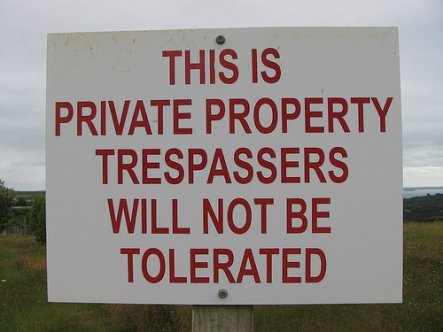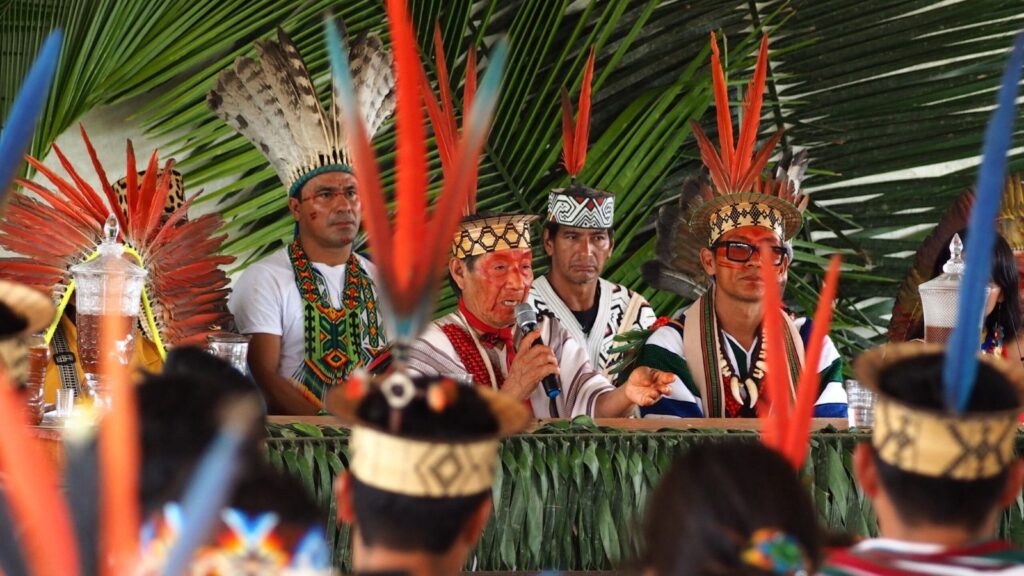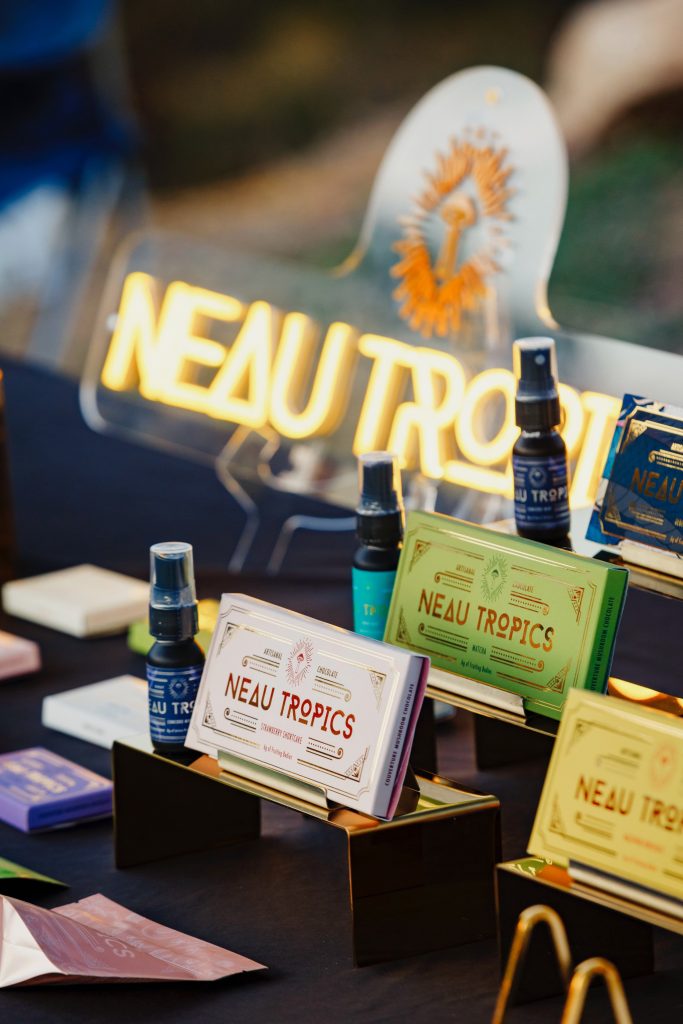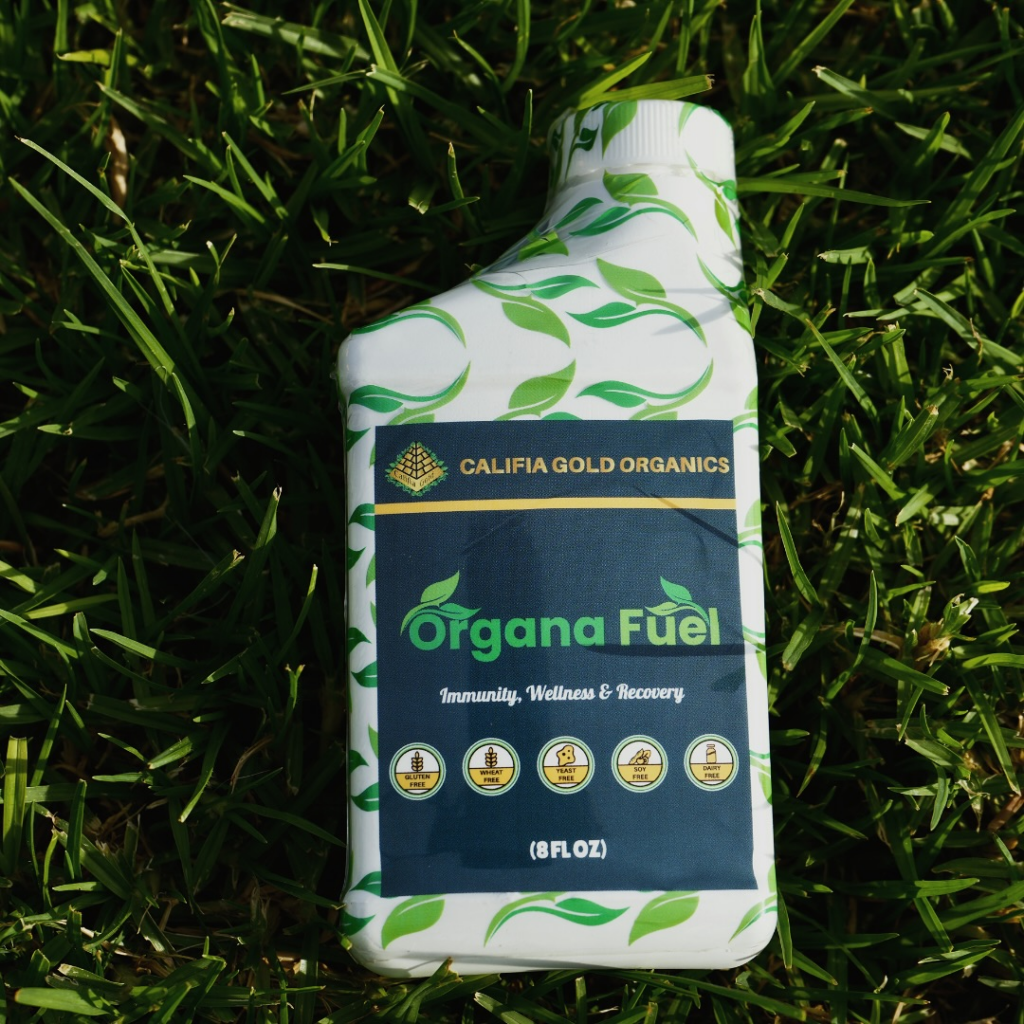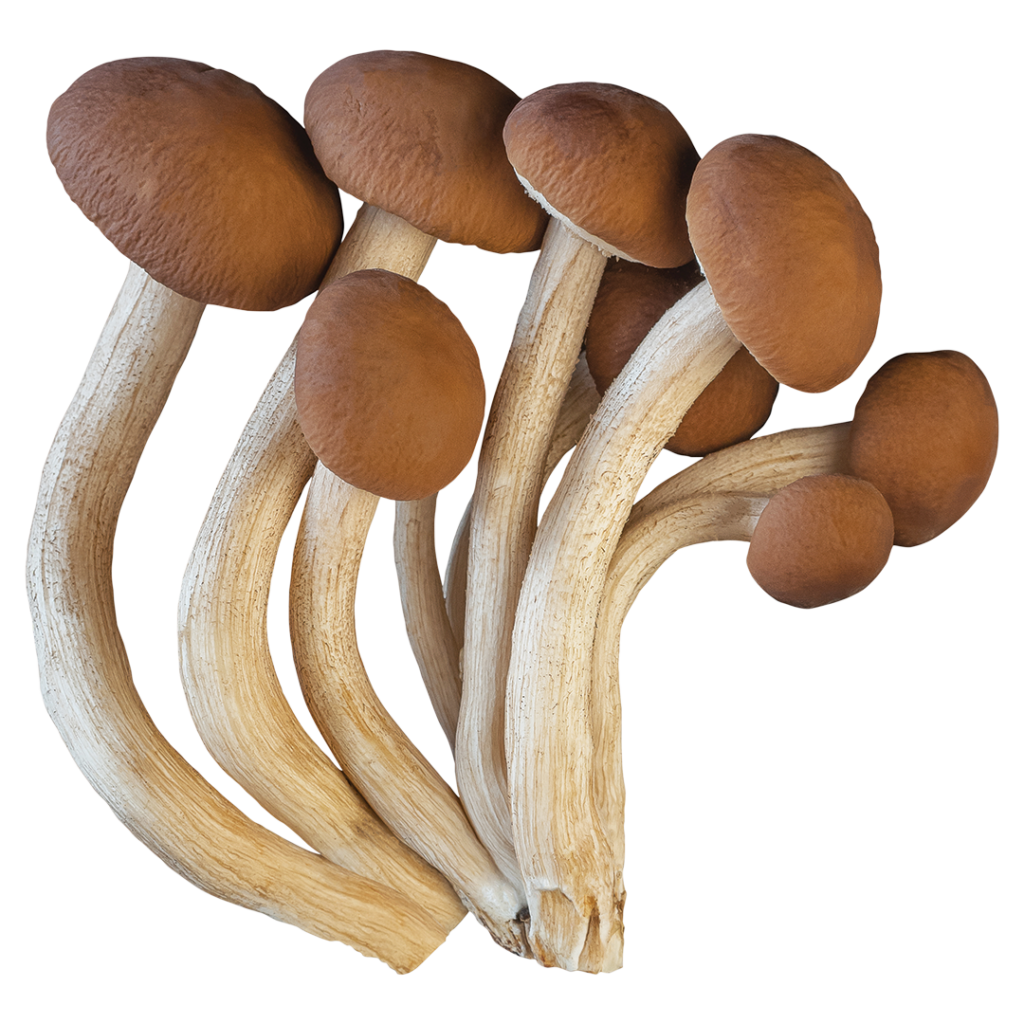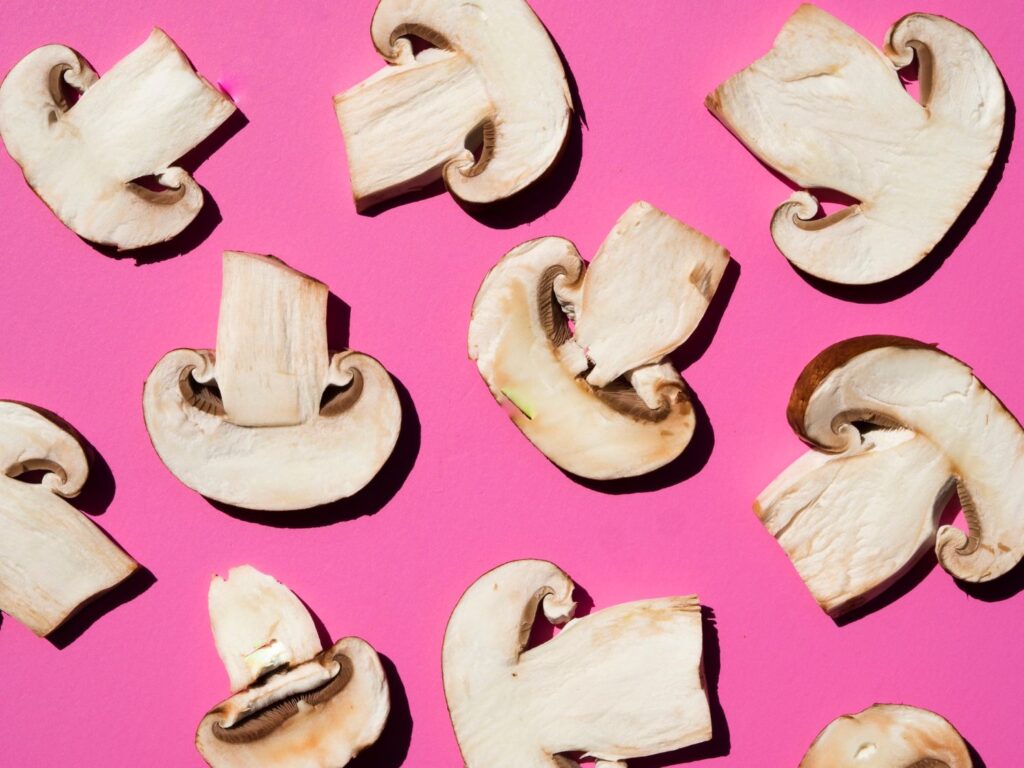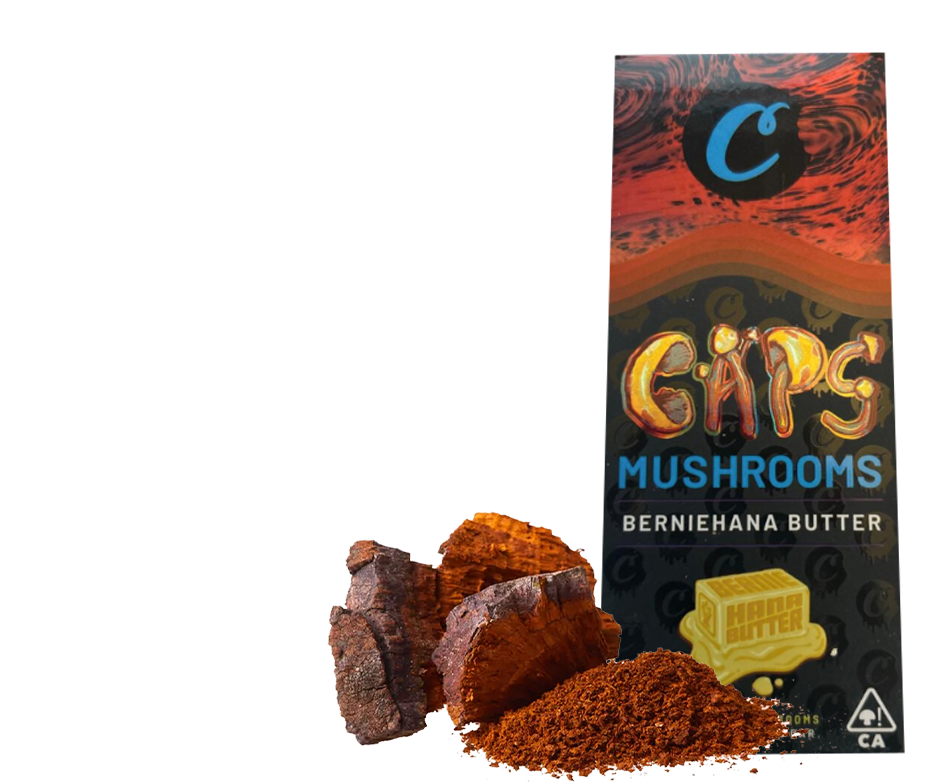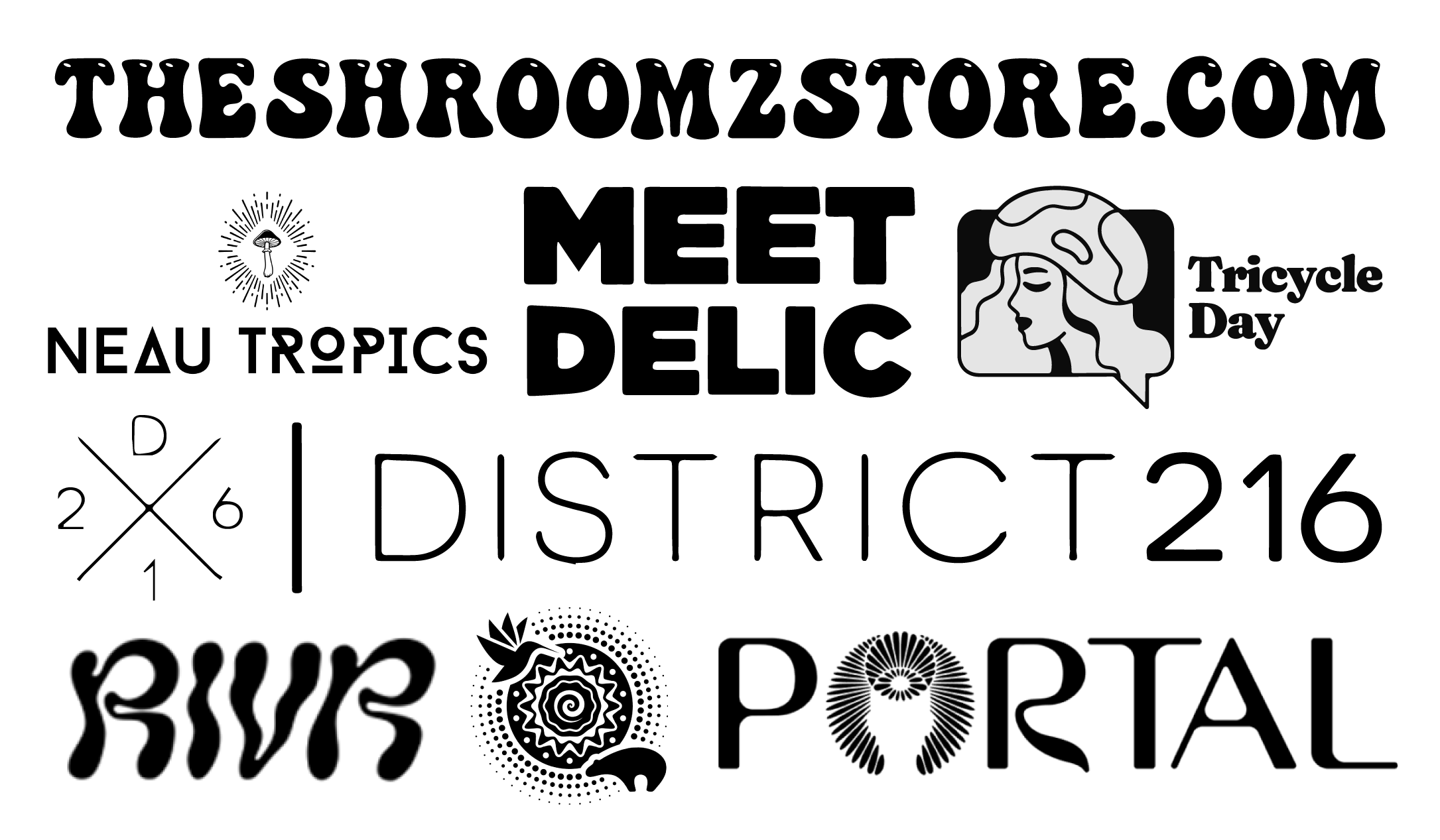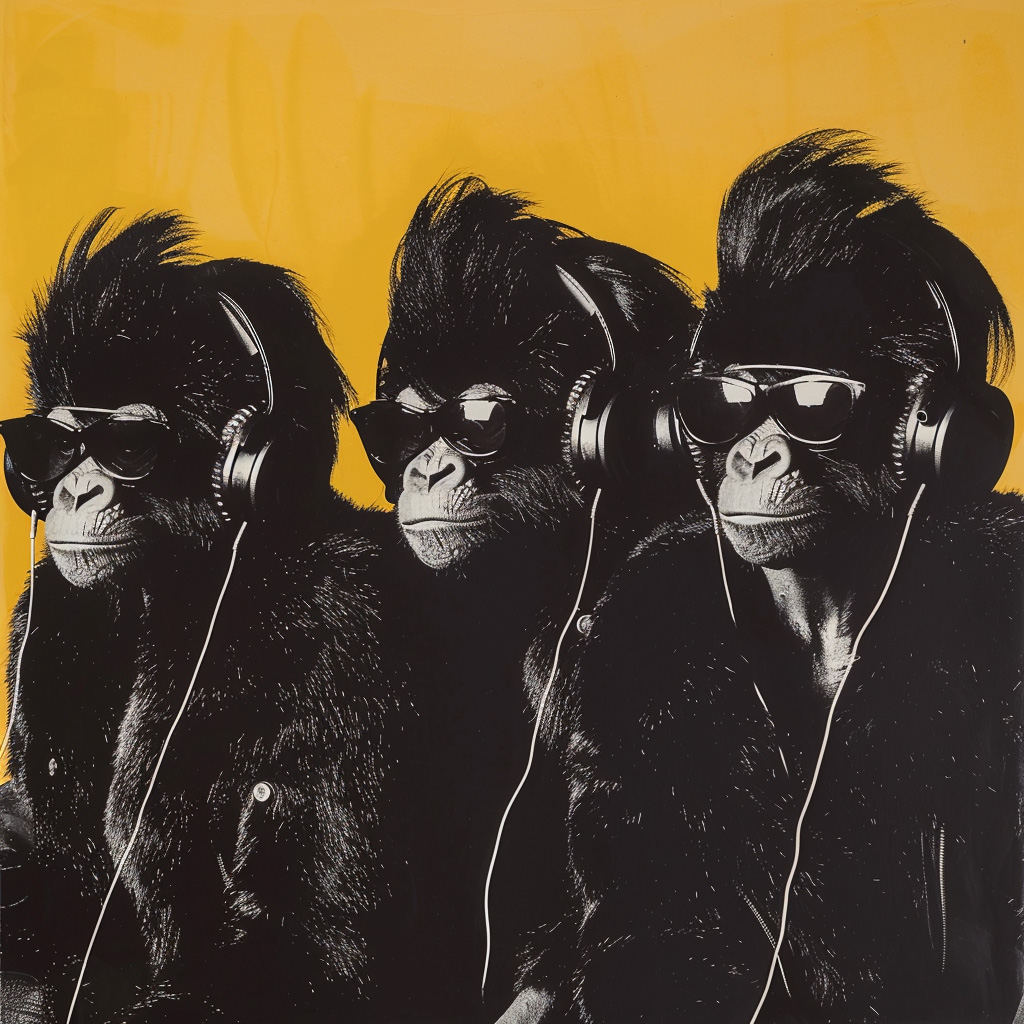The following is the fifth installment from Sacred Economics: Money, Gift, and Society in the Age of Transition, available from EVOLVER EDITIONS/North Atlantic Books. You can read the Introduction here, and visit the Sacred Economics homepage here.
What would be the result in heaven itself if those who
get there first instituted private property in the surface of heaven, and
parceled it out in absolute ownership among themselves, as we parcel out the
surface of the earth? –Henry George
Man did not make the earth, and, though he had a natural
right to occupy it, he had no right to locate as his property in perpetuity any
part of it; neither did the Creator of the earth open a land-office, from
whence the first title-deeds should issue. –Thomas Paine
The
Urge to Own
We have lived in an Age of Separation. One by one, our bonds
to community, nature, and place have dissolved, marooning us in an alien world.
The loss of these bonds is more than a reduction of our wealth, it is a
reduction of our very being. The impoverishment we feel, cut off from community
and cut off from nature, is an impoverishment of our souls. That is because,
contrary to the assumptions of economics, biology, political philosophy,
psychology, and institutional religion, we are not in essence separate beings
having relationships. We are relationship.
I once heard Martín Prechtel,
speaking of his village in Guatemala, explain, "In my village, if you went to
the medicine man with a sick child, you would never say, ‘I am healthy, but my
child is sick.' You would say, ‘My family is sick.' Or if it were a neighbor,
you might say, ‘My village is sick.'" No doubt, in such a society, it would be
equally inconceivable to say, "I am healthy, but the forest is sick." To think
anyone could be healthy when her family, her village, or indeed the land, the
water, or the planet were not, would be as absurd as saying, "I've got a fatal
liver disease, but that's just my liver-I am healthy!" Just as my sense of self
includes my liver, so theirs included their social and natural community.
The modern self, in contrast, is a
discrete and separate subject in a universe that is Other. This self is the
Economic Man of Adam Smith; it is the embodied soul of religion; it is the
selfish gene of biology. It underlies the converging crises of our time, which
are all variations on the theme of separation-separation from nature, from
community, from lost parts of ourselves. It underlies all the usual culprits
blamed for the ongoing destruction of ecology and polity, such as human greed
or capitalism. Our sense of self entails, "More for me is less for you"; hence
we have an interest-based money system embodying precisely that principle. In
older, gift-based societies, the opposite was true.
The urge to own grows as a natural
response to an alienating ideology that severs felt connections and leaves us
alone in the universe. When we exclude world from self, the tiny, lonely
identity that remains has a voracious need to claim as much as possible of that
lost beingness for its own. If all the world, all of life and earth, is no
longer me, I can at least compensate by making it mine. Other separate selves
do the same, so we live in a world of competition and omnipresent anxiety. It
is built into our self-definition. This is the deficit of being, the deficit of
soul, into which we are born.
Trapped in the logic of me and mine,
we seek to recover some tiny fraction of our lost wealth by expanding and
protecting the separate self and its extension: money and property. Those who
lack the economic means to inflate the self often inflate the physical self
instead, which is one reason why obesity disproportionately afflicts the poor.
Addictions to shopping, to money, and to acquisition arise from the same basic
source as do addictions to food: both come from loneliness, from the pain of
merely existing cut off from most of what we are.
Looking out upon the strip mines and
the clear-cuts and the dead zones and the genocides and the debased consumer
culture, we ask, What is the origin of this monstrous machine that chews up
beauty and spits out money? The discrete and separate self, surveying a
universe that is fundamentally Other, naturally treats the natural and human
world as a pile of instrumental, accidental stuff. The rest of the world
is fundamentally not-self.1
Why should we care about it, beyond our own foreseeable utility? So it was that
Descartes, a pioneering articulator of the modern sense of self, articulated as
well the ambition to become the "lords and possessors" of nature. As the latter
word implies, the idea of property occurs quite naturally to the separate self
Our rigid, narrow, self/other
distinction is coming to an end, victim of its own premises. As the mystics
have taught, the separate self can be maintained only temporarily, and at great
cost. And we have maintained it a long time, and built a civilization upon it
that seeks the conquest of nature and human nature. The present convergence of
crises has laid bare the futility of that goal. It portends the end of
civilization as we know it, and the instauration of a new state of human
beingness defined by a more fluid, more inclusive sense of self.
One theory
of the origin of property associates it with the notion of autonomy, or
self-sovereignty, that emerged slowly out of our communal tribal past. Charles
Avila describes the logic this way: "If I am my own, and my labor power belongs
to me, then what I make is mine."2
Here then is an ideological prerequisite for any concept of property, that "I
am my own," which is by no means a universal precept in human societies. In
other societies, the clan, the tribe, the village, or even the community of all
life may have taken priority over the individual conception of the self, in which
case your labor power does not belong to you, but to something greater.3 The institution of property,
therefore, is not the root of our present malady, but a symptom of our
disconnection and isolation. This book, therefore, does not seek to abolish property
(for to do so would address the symptom rather than the cause) but to transform
it as part of a larger transformation of human beingness.
Other
thinkers, notably Wilhelm Reich and Genevieve Vaughan, link the origin of
property to the emergence of male dominance and patriarchal society.4 While I believe these arguments
have merit, I have chosen not to explore herein the sexual dimensions of money
and property, a subject deserving of its own treatise. Each institution of our
Age of Separation is tied to all the others; alienation from nature, the body,
and the sacred feminine echoes the alienation from the world that property
implies when it makes things detachable objects of commerce.
The urge to
own diminishes as our sense of connectedness and gratitude grows, and we
realize that our labor power is not our own, and what I make is not properly
mine. Is not my ability to labor, and my life itself, a gift too? In that
realization, we desire to give our creations to all that have contributed to
our being and granted us the gift of life.
Certain
socialist philosophers have turned this desire, motivated by gratitude, into an
obligation instead, and into a justification for state expropriation of
individual labor. We owe a "debt to society," and the state becomes the debt
collector. In less extreme form, it justifies the income tax-also an
expropriation of individual labor. In both cases, we are compelled through
force to give. Can we instead create an economic system that liberates,
celebrates, and rewards the innate urge to give? That is what this book
describes: a system that rewards flow and not accumulation, creating and not
owning, giving and not having.
The
Original Robbery
The sovereignty of the individual was but a first step
toward the modern concept of property, for most things on this earth do not
exist through anyone's labor. By the logic of "what I make is mine," anything
that existed independent of human effort could belong to no one. To claim
ownership of such a thing-the land, the rivers, the animals, the trees-would be
tantamount to theft, just as I am a thief if I seize ownership of something you
make.
A
distinguished line of economic thought has arisen from this realization, whose
most notable exponents were P. D. Proudhon, Karl Marx, Henry George, and Silvio
Gesell. "Property is robbery," proclaimed Proudhon: tracing back the origin of
any piece of property through a succession of "legitimate" transfers, we
eventually get to the first owner-the one who simply took it, the one who
separated it off from the realm of "ours" or "God's" into the realm of "mine."
Usually this happened by force, as in the seizure of the vast lands of all
North America in the last three centuries. This story has played itself out in
various forms for millennia all over the world. After all, before Roman times
there was no such thing as a deed. Land was like the air and water; it could
not be owned. The first owners therefore could not have acquired it
legitimately. They must have taken it.
It is often
argued that land ownership is a natural consequence of agriculture. While the
hunter-gatherer has made little investment in her land, the farmer has put
labor into making it more productive (of food for humans, that is). It would be
patently unjust for the farmer to labor all year only to have "gatherers" come
in at harvest time and live off the harvest. Private property is supposed to
give people an incentive to make improvements upon the land. But wouldn't it be
more just if there were some way to own the improvements, and not the land
itself?
Originally,
land rights were almost always held in common, accruing to the village or
tribe, and not the individual. In the great agrarian civilizations such as
Egypt, Mesopotamia, and Zhou Dynasty China, there was little concept of private
land ownership. All land was the property of the king, and because the king was
the representative of the divine on earth, all land was the property of God.
There is a
vast conceptual gulf between having a right to the fruits of one's labor as
applied to land and owning the land itself. In the West, the absolute concept
of land ownership seems to have originated in Rome, fertilized, perhaps, by the
Greek conception of the individual. It was in Rome that land first came under
what they called dominium, "the ultimate right, the right which had no
right behind it, the right which legitimated all others, while itself having no
need of legitimation … the right ‘of using, enjoying, and abusing'-ius
utendi, fruendi, abutendi."5
In the
East, explicit land ownership began somewhat earlier, at least in concept. In
China it dates back at least to the reign of Shang Yang in the fourth century
BCE and perhaps before, though even then a time prior to land ownership was
still a matter of historical memory, as evidenced by Confucian statements that
it was improper to sell land in "ancient times."6 India as well probably knew private ownership of land by
the sixth century BCE, though the evidence is somewhat contradictory.7 In any event, the vast majority
of land in India was communally owned up until the time of British rule.8
In Medieval
Europe, the bulk of the land was owned either in common or by feudal lords who
did not "own" the land in the full modern sense, as an alienable commodity to
freely buy and sell. They had certain rights to the land, which could be
transferred to vassals in exchange for various services, shares of crops, and
eventually for money. In England, free alienation of land was generally not
possible until the fifteenth century.9
Thereafter, the vast communal lands of England rapidly came under private
ownership thanks to the Enclosure Acts, a process paralleled across the
continent, for example through the "emancipation" of the serfs. Lewis Hyde
writes,
Whereas before a man could fish in any stream and hunt in
any forest, now he found there were individuals who claimed to be the owners of
these commons. The basis of land tenure had shifted. The medieval serf had been
almost the opposite of a property owner: the land had owned him. He could
not move freely from place to place, and yet he had inalienable rights to the
piece of land to which he was attached. Now men claimed to own the land and
offered to rent it out at a fee. While a serf could not be removed from his
land, a tenant could be evicted not only through failure to pay the rent but
merely at the whim of the landlord.10
As with so many social reforms, the freeing of the serfs was
another step in the consolidation of economic and political power in the hands
of the already powerful. By one means or another, people who had for
generations freely grazed their herds, collected firewood, and hunted on the
lands around them could no longer do so.11 These lands had been a commons, the property of all and of none.
Forever after, they became property.
If property
is robbery, then a legal system dedicated to the protection of private property
rights is a system that perpetuates a crime. By making property sacrosanct we
validate the original theft. This should not be too surprising if the laws were
made by the thieves themselves to legitimize their ill-gotten gains. Such was
indeed the case: in Rome and elsewhere, it was the rich and powerful who both
seized the land and made the laws.
Lest the
reader think I am launching a Marxist diatribe, let me hasten to add that I am
not advocating the abolition of private property. For one thing, the whole
mentality of abolition involves a fervid, abrupt, jarring change imposed
forcefully on the unwilling. Secondly, private property is but a symptom of a deeper
malady (Separation), and if we address that symptom from the mind-set of
Separation, of conquest, of overcoming evil, we will end up with the same
iniquities in different forms. Finally, even on the economic level, the problem
is not private property per se,
but the unfair advantages of owning it. Even though it is wrong for someone to
benefit from mere ownership of what was once common, everyone benefits when
resources go toward those who will use them the best. These include the land,
soil, minerals, aquifers, and capacity of the atmosphere to absorb waste. We
need an economic system that disallows profit-by-owning yet rewards the
entrepreneur's spirit that says, "I know a way to use it better," and allows
that spirit free rein. Marxist systems not only eliminate profit from exclusive
control of scarce capital resources; they also eliminate profit from
their efficacious use. The result is inefficiency and stagnation. Can we
reward those who put resources to best use without rewarding the mere fact of
ownership? This book describes a money system that preserves the freedom of
private property without allowing its owners to accrue unfair advantages.
Wherever
and whenever it happened, the privatization of land soon brought with it a
concentration of ownership. In the early days of ancient Rome, land was common
(not personal) property, except for a small homestead plot: "The corn land was
of public right."12 As
Rome expanded through conquest, the new lands did not stay "public" very long
but soon migrated into the hands of the wealthiest families — the patrician
class — setting the norm for many centuries to come. Their estates also grew at
the expense of the original plebeian freeholds, whose owners were frequently
called away to serve in the legions, and which in any case could not compete
economically with the cheap slave labor of the patrician estates. They
accumulated insurmountable debts and, because land had become an alienable
commodity, were forced off their homesteads and into beggary, banditry, or, if
they were fortunate, the urban craft professions.
When the
fortunes of the Empire turned and the supply of slaves dried up, many large
landholders turned to tenant farmers, the coloni, to farm their fields. Bound by debt, these tenants eventually
became the Medieval serfs. Think of it this way: if you owe me an
insurmountable debt, then you are obliged to pay at least as much of it as you
can. The proceeds of your labor, forever after, belong to me. How similar this
is to the United States bankruptcy laws as promulgated in the Bankruptcy
"Reform" Act of 2005, which compel the person declaring bankruptcy to commit a
portion of future wages to creditors.13
How similar as well to the plight of Third World countries, who are compelled
to restructure their economies and devote their entire economic surplus toward
the perpetual servicing of debt. These are the modern counterparts of the
serfs, bound to work for the owners of money just as the serfs worked for the
owners of land. Their condition is known as "debt peonage."
The
parallel between ancient Rome and the present day is striking. Now as then,
wealth is increasingly concentrated in the hands of the few. Now as then,
people must go into lifelong debt that they can never pay off just to have
access to the necessities of life. Then it was through access to land; today it
is through access to money. The slaves, serfs, and tenants gave a lifetime of
labor to the enrichment of the landowners; today the proceeds of our labor go
to the owners of money.
In the history
of radical thought, the realization that property is theft usually accompanies
a rage and desire for vengeance against the thieves. Matters are not so simple,
though. The owners of wealth, whether inherited or not, are born into a role
that is created and necessitated by the great invisible stories of our
civilization that compel us to turn the world into property and money whether
we are aware of doing so or not.
Let us not
waste our psychic energy hating the rich, or even the original plunderers. Cast
in their station, we would have enacted the same role. Indeed, most of us
participate, in one way or another, in the ongoing theft of the commons. Let us
not hate, lest we prolong the Age of Separation even further and lest we, like
the Bolsheviks, perpetrate a revolution that is insufficiently deep, and so
re-create the old order in a different, distorted form. Still, let us not lose
sight of the nature and effects of the unconscious crime of property, so that
we may return our world to its original and still-latent abundance.
The
transformation from a right to benefit into outright ownership of land was a
gradual one, whose terminus is the practice of selling land for money. Let's
keep in mind that this was a conceptual transformation (the land doesn't admit
to being owned), a human projection onto reality. Land ownership (and indeed
all forms of ownership) says more about our perception of the world than about
the nature of the thing owned. The transition from the early days, when
ownership of land was as unthinkable as ownership of the sky, sun, and moon, to
the present day, when nearly every square foot of the earth is subject to
ownership of one sort or another, is really just the story of our changing view
of ourselves in relation to the universe.
The
Georgist Tradition
The distinction between the right to use and outright
ownership echoes the primitive distinction between that which is produced
through human effort and that which is there already; it persists today in the
distinction between "real" and "personal" property, and it is a basis for
thousands of years of reformist thought.
Since the
Roman Empire developed the legal basis of property rights as we know them
today, it is unsurprising that it also produced some of the earliest critics of
property. In the third and fourth centuries, the early leaders of the Christian
church were especially clear that the things of the earth were for all to
share. Ambrose wrote, "Rich and poor alike enjoy the splendid ornaments of the
universe … The house of God is common to rich and poor," and "The Lord our God
has willed this earth to be the common possession of all and its fruit to
support all."14
Elsewhere he writes that private property
is not according to nature, for nature has brought forth
all things for all in common. Thus God has created everything in such a way
that all things be possessed in common. Nature therefore is the mother of
common right, usurpation of private right.15
Others of the Christian Fathers, notably John Chrysostom,
Augustine, Basil the Great, and Clement, weighed in with similar views,
encouraging followers to follow Jesus's teachings quite literally and give all
their possessions to the poor. Theirs was not a detached philosophy: many of
these leaders did exactly that. Ambrose, Basil, and Augustine had been men of
considerable wealth before entering the clergy, and they gave it all away.
The
teachings of its founders notwithstanding, eventually the Church itself
acquired considerable property and allied itself with imperial power. The
teachings of Jesus became otherworldly ideals that were not seriously
recommended to anyone, and the Kingdom of God was transported from earth to
Heaven. This was a major step in the conceptual separation of spirit and matter
that has contributed to making materiality, and especially money, profane
today. Even more ironically, most people today who profess to follow Christian
teachings have turned everything inside out and associate socialism with
atheism and private wealth with God's favor.
The early
Church fathers made frequent reference to the distinction between what people
produce through their own effort and what was given to humanity by God for all
to use in common. Many social and economic critics of the last several
centuries echoed this early indignation at the appropriation of the commons and
developed creative proposals to remedy it. One such early critic, Thomas Paine,
wrote,
And as it is impossible to separate the improvement made by
cultivation from the earth itself, upon which that improvement is made, the
idea of landed property arose from that parable connection; but it is
nevertheless true, that it is the value of the improvement, only, and not the
earth itself, that is individual property…. Every proprietor, therefore, of
cultivated lands, owes to the community a ground-rent (for I know of no better
term to express the idea) for the land which he holds.16
The first
economist to develop this idea fully was Henry George, in his eloquent 1879
classic Progress and Poverty. He started with essentially the same
premise as Paine and the early Christians:
But who made the earth that any man can claim such
ownership of it, or any part of it, or the right to give, sell or bequeath it?
Since the earth was not made by us, but is only a temporary dwelling place on
which one generation of men follow another; since we find ourselves here, are
manifestly here with equal permission of the Creator, it is manifest that no
one can have any exclusive right of ownership in land, and that the rights of all
men to land must be equal and inalienable. There must be exclusive right of
possession of land, for the man who uses it must have secure possession of land
in order to reap the products of his labor. But his right of possession must be
limited by the equal right of all, and should therefore be conditioned upon the
payment to the community by the possessor of an equivalent for any special
valuable privilege thus accorded him.17
Why should
someone profit from the use-value of land by the mere fact of owning it,
especially when the origin of that ownership is based on ancient injustice?
Accordingly, Henry George proposed his famous Single Tax-essentially a
100-percent tax on the "economic rent" deriving from land. This was to be
implemented through a tax on the value of land as distinct from improvements
upon it; for example, land would be taxed but not buildings or crops. It was
called "single" because he advocated the abolition of all other taxes,
reasoning that it is just as much theft to tax legitimate private property as
it is to profit from something that belongs to all. George's writings sparked a
massive political movement that almost got him elected to the New York mayor's
office, but of course the established money power fought him at every turn.18 His ideas have been
sporadically adopted around the world (the two places I've spent most of my
life, Taiwan and Pennsylvania, both levy taxes on the underlying value of land)
and have greatly influenced economic thought.
One of his
admirers, Silvio Gesell, proposed a near-equivalent to George's land tax: the
public ownership of all land, available for private leasing at a rate that
would approximate the economic rent.19
Gesell's reasoning is compelling and remarkably prescient in its understanding
of ecology and the connected self. Read this extraordinary passage from 1906:
We frequently hear the phrase: Man has a natural right to
the earth. But that is absurd, for it would be just as correct to say that man
has a right to his limbs. If we talk of rights in this connection we must also
say that a pine-tree has the right to sink its roots in the earth. Can man
spend his life in a balloon? The earth belongs to, and is an organic part of
man. We cannot conceive man without the earth any more than without a head or a
stomach. The earth is just as much a part, an organ, of man as his head. Where
do the digestive organs of man begin and end? They have no beginning and no
end, but form a closed system without beginning or end. The substances which
man requires to maintain life are indigestible in their raw state and must go
through a preparatory digestive process. And this preparatory work is not done
by the mouth, but by the plant. It is the plant which collects and transmutes
the substances so that they may become nutriment in their further progress
through the digestive canal. Plants and the space they occupy are just as much
a part of man as his mouth, his teeth or his stomach….
How, then,
can we suffer individual men to confiscate for themselves parts of the earth as
their exclusive property, to erect barriers and with the help of watchdogs and
trained slaves to keep us away from parts of the earth, from parts of
ourselves-to tear, as it were, whole limbs from our bodies? Is not such a
proceeding equivalent to self-mutilation?20
Gesell goes
on, with great rhetorical flourish, to say that this mutilation is even worse
than the amputation of a body part, for wounds of the body heal, but
the wound left … by the amputation of a piece of land
festers forever, and never closes. At every term for the payment of rent, on
every Quarter Day, the wound opens and the golden blood gushes out. Man is bled
white and goes staggering forward. The amputation of a piece of land from our
body is the bloodiest of all operations; it leaves a gaping, festering wound
which cannot heal unless the stolen limb is grafted on again.
I think this is a wound we all feel, not only as the rent
built into the cost of everything we buy, but also as a spiritual
disenfranchisement. Some time ago I was driving with a woman from France down
the country roads of central Pennsylvania. The gentle mountains and broad
valleys beckoned to us, so we decided to walk them. It seemed as if the ground
was begging for our feet, wanting to be tread. We decided to find a place to
pull over and walk. We drove for an hour, but we never did find a field or
forest that wasn't festooned with "No Trespassing" signs. Every time I see one
I feel a twinge, a loss. Any squirrel is freer than I am, any deer. These signs
apply to humans only. Herein lies a universal principle: the regime of
property, the enclosure of the unowned, has made us all poorer. The promise of
freedom inherent in that broad, verdant landscape was a mirage. Woody Guthrie's
words ring true:
There was a big high wall there that tried to stop me.
The sign was painted, it said private property.
But on the back side it didn't say nothing.
That side was made for you and me.21
After three
hundred years of economic expansion, we are so impoverished that we lack the
wealth and freedom of a squirrel. The indigenous people who lived here before
the Europeans arrived had the run of the land. They had the simple freedom to
say, "Let us climb that mountain. Let us swim in that lake. Let us fish that
river." Not even the wealthiest among us have that freedom today. Even a
billion-dollar landholding is smaller than the domain of the hunter-gatherer.22
The
situation is different in most of Europe; in Sweden, for instance, the right of
Allemansrätt allows individuals to walk, pick flowers, camp for a day or
two, swim, or ski on private land (but not too near a dwelling). I met a horse
enthusiast who described how, in Ireland, all the gates to private farm lanes
and pastures are unlocked. "Trespassing" is not a concept; the land is open to
all. The riders are respectful of the farmer and the land in turn, sticking to
the perimeters to avoid disturbing animals and pasture. Hearing of this system,
I don't think any American can look out upon the vast expanses of this country
with their gates, fences, and no-trespassing signs without a feeling of
confinement or loss. Can you feel Gesell's "wound"-that the very land has been
severed from us?
Gesell's
huge contribution beyond George was to apply parallel thinking beyond land to
money, inventing a new kind of money system that I will describe, after due
groundwork, later in this book as a key element of a sacred economy.
Controversial
among progressives of his time, Henry George's insistence on taxing only land
makes even less sense today because so many other commons have been brought
into the realm of private property.23
Hyde's "marketing of formerly inalienable properties" has gone far beyond land
to encompass nearly everything essential to human existence and human joy. Our
connections to nature, to culture, and to community have been riven, separated
off and sold back to us. I have so far focused on the land, but nearly every
other commons has suffered the same fate. Intellectual property offers the most
obvious example, and the royalties that derive from owning it play a role
similar to land rent. (If you think intellectual property differs from land
because it is created by humans, read on!) But there is one form of ownership
that contains and supersedes the rest: the ownership of money. In the realm of
finance, interest plays the role of royalties and rents, ensuring that the
wealth that flows from human creativity and labor flows primarily to those who
own money. Money is just as criminal in its origins as are other forms of
property-an ongoing robbery that both impels and embodies the expropriation of
the commons.
To restore
sacredness to economy, we need to redress this robbery, because it is
ultimately a theft and a reduction of a divine gift. It is the conversion of what
was once sacred, unique, and personal into the status of commodity. It is not
immediately obvious that the right to profit from mere ownership of money is
just as illegitimate as the right to profit from the mere ownership of land.
After all, money, unlike land, is a human creation. We earn money from the
application of our human gifts, our own energy, time, and creativity. Surely
the proceeds from this labor rightfully belong to the laborer? Surely,
therefore, not all money is illegitimate in its ultimate origin?
This view
is naive. In fact, money is deeply and irretrievably implicated in the
conversion of the land commons into private property, the final and defining
stage of which is its reduction to the status of just another commodity that
can be bought and sold. So too have other elements of our natural and cultural
bequest been cordoned off, turned into property, and finally, as "goods and
services," into money. This is not to say that it is immoral to work for money;
it is, rather, immoral for money to work for you. What rental is on land, so
interest is on money. Money is the corpse of the commons, the embodiment of all
that was once common and free, turned now into property of the purest form. The
next several chapters will substantiate this claim, describing exactly how and
why interest-bearing money, by nature, usurps the commons, ruins the planet,
and reduces the vast majority of humanity to peonage.
Notes
1.
As above, so below. Having made nature into an adversary, or at best a pile of
"resources," it is no surprise that we manifest the same relationship within
our bodies. The defining diseases of our time are the autoimmune diseases, the
somatization of our self-other confusion. Just as the village, the forest, and
the planet are inseparable parts of ourselves that we mistake as other, so our
immune systems reject our own body tissues. What we do to nature, we do to
ourselves, inescapably.
2. Avila, Ownership,
5.
3. Even today, we have a spiritual sense that our labor is
indeed not our own. It comes through in our desire to work for something
greater than ourselves-that is, to dedicate our labor to a cause beyond our
rational self-interest. Religious people might describe it as "giving one's
life to God." Another way of putting it is that we have a need to make a gift
of our labor and its products, and of all the skills and talents that inform
it. We then feel fulfilled, serene in the knowledge that we are fulfilling our
purpose here on earth. Intuitively, we know that our gifts must be given in turn,
and not hoarded for the brief and illusory aggrandizement of the separate self.
4.
See, for example, Reich's Sex-Pol and Vaughan's "Gift Giving as the
Female Principle vs. Patriarchal Capitalism."
5.
Avila, Ownership, 20.
6. Xu, Ancient China in Transition, 112. This book
seeks to interpret the Confucian position as a criticism of concentration of
ownership. Deng, "A Comparative Study on Land Ownership," 12. Deng maintains
that prior to then, alienation of land was forbidden, since it was all the
property of the king. Deng also argues that in practice, land was generally not
alienable or fungible at least through the medieval Song Dynasty.
7. Altekar, State and
Government in Ancient India, 273-4.
8.
Kuhnen, Man and Land, Sec. 2.1.1 and 2.1.2.
9. Deng,
"A Comparative Study on Land Ownership," 10.
10. Hyde, The Gift,
121.
11. Of course, the peasants
resisted their dispossession from the commons, fomenting the bloody struggle
known in Germany as the Peasants' War. It is a struggle reenacted time and
again around the globe whenever people resist the incursion of property rights
into yet another sphere of human relationship. As Hyde puts it, "the Peasants'
War was the same war that the American Indians had to fight with the Europeans,
a war against the marketing of formerly inalienable properties."
12. Avila, Ownership, 16, quoting a ancient source
from H. F. Jolowicz and Barry Nicholas, Historical Introduction to the Study
of Roman Law, 139.
13. Moreover, many types of debt, such as tax debt, alimony
debt, and student loans, are not affected by bankruptcy. At the present
writing, student loan debt in the United States exceeds credit card debt,
posing a huge burden on graduating students.
14. In Psalmum CXVIII Expositio, 8, 22, PL 15:1303, cited by
Avila, Ownership, 72.
15. Avila, Ownership,
74.
16. Paine, Agrarian Justice, par. 11-12.
17. George "The Single Tax."
18. Another reason for his political defeat was that George
was rigidly dogmatic, refusing political alliance with anyone who did not
uncompromisingly endorse his Single Tax.
19. Economic rent
refers to the proceeds of ownership, such as rents, royalties, dividends, and
interest.
20. Gesell, The Natural Economic Order, part 2,
chapter 5, "The Case for the Nationalization of Land."
21. From "This Land is Your Land." This verse is usually
omitted from the songbooks.
22. The reader might bring up the territoriality of animals,
many of whom are not free to roam. Not all animals are territorial, however,
and those that are often exhibit group territoriality, not individual
territoriality. So it was with humans for most of our existence. At the very
least, each person had the freedom of the entire tribal territory. Shall we
today shrink our territory down to the level of the nuclear family? Or shall we
expand our tribe to include the whole earth?
23. There are other significant problems with George's
program. In particular, it is very difficult to separate the value of land from
the value of improvements upon it, especially because the intrinsic value of
land is determined not only by its physical characteristics, but also by its
location relative to other pieces of land bearing human improvements. By
building on your land, you attract others to build nearby, thus raising the
value of your own land and creating a disincentive to build in the first place.
This is one reason why I prefer Silvio Gesell's leasing approach to solving the
problem of economic rent.
Image by eyelesnz, courtesy of Creative Commons license.
